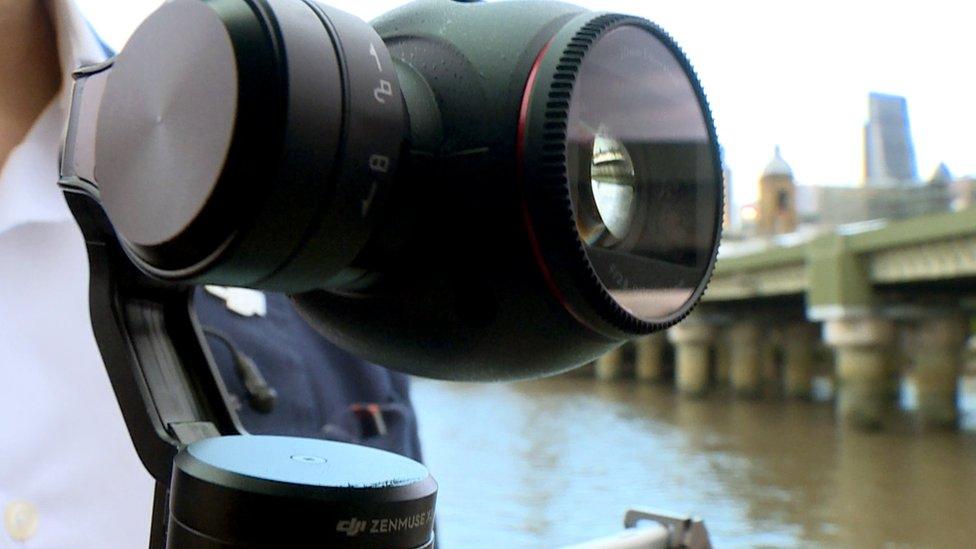DJI's Mavic Pro fold-up drone detects obstacles
- Published
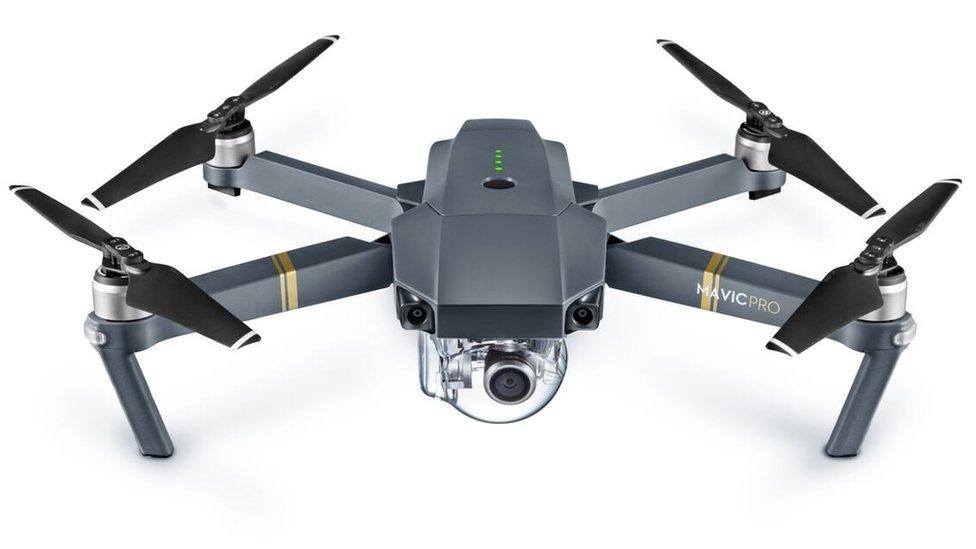
The Mavic Pro can be used to take aerial selfies or stream live footage to YouTube
DJI - the world's bestselling drone manufacturer - has announced its first foldable aircraft to be targeted at consumers.
The Chinese company says the quadcopter can be compressed to roughly the size of a water bottle for transportation.
The Mavic Pro's launch comes a week after the action-cam specialist GoPro revealed a foldable drone of its own.
The two models are a similar price, but DJI's machine has the advantage of featuring obstacle-avoidance sensors.
The Mavic Pro is also smaller, can fly further away from its operator and can stay airborne for longer periods of time, according to its specifications.
"DJI already had the mind share and the market share in terms of drones, but releasing something this high-end, this affordable and this portable is going to make it even tougher for GoPro," commented Cam Bunton, contributing editor of the tech review site Pocket-lint.
"In particular, obstacle avoidance will make the Mavic Pro a lot more attractive to first-time buyers because it will stop it crashing into things and it also provides tactile feedback on the controller to warn when the drone is getting near to an object."
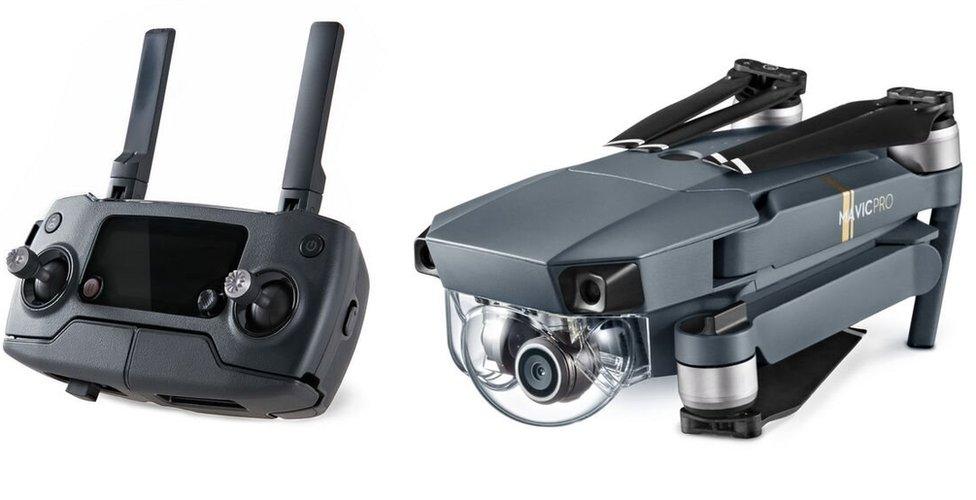
The Mavic Pro is designed to fit in a bag
Global sales of consumer drones totalled $355.9m (£275m) last year, but the sector is forecast to grow to more than $4bn by 2024, according to a recent report by the US consultancy Grand View Research, external.
It noted that the "threat of accidents" was one of the factors that had limited sales to date.
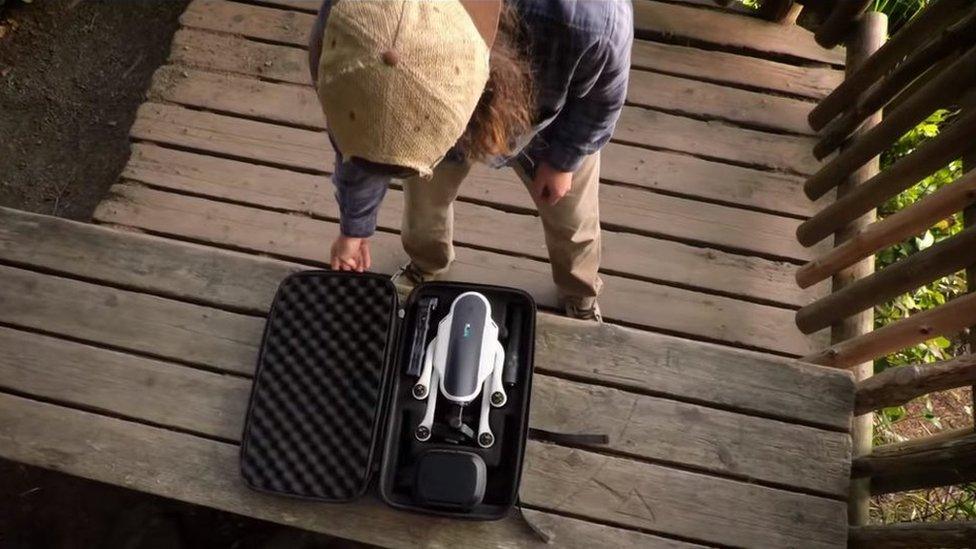
GoPro's Karma drone can also be packed away for transportation
Safety features
The Mavic Pro is not DJI's first foldable design - it sells larger octocopters with adjustable arms for industrial applications - but it represents its most compact model.
"Mavic Pro is a technological triumph filled with features that once again show how DJI leads the industry," said the company's chief executive Frank Wang.
The machine includes a front-facing collision-avoidance system that can spot obstacles up to 15m (49ft) away when travelling below 36km/h (22mph).
Additional sensors detect the terrain below, allowing it to avoid being caught out by upward slopes.
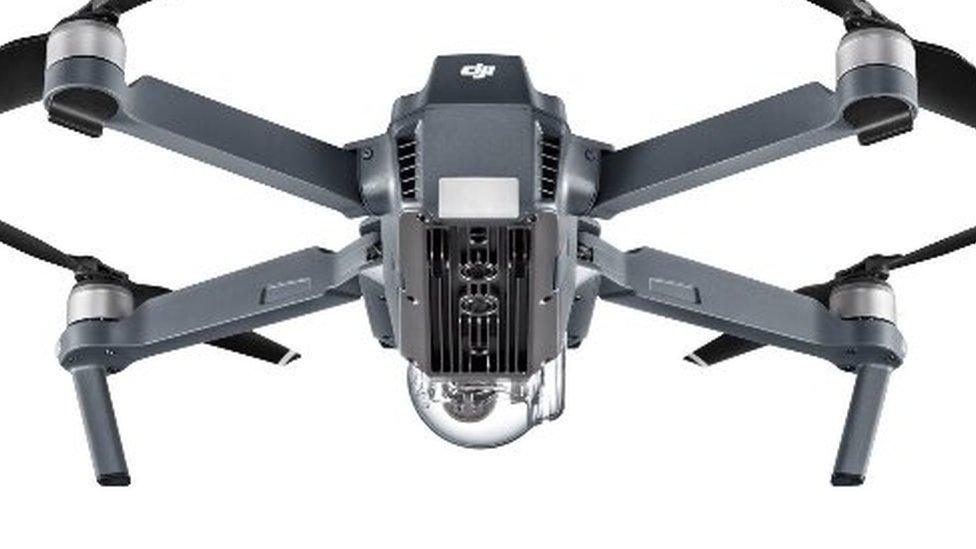
Camera sensors on the base of the drone mean it can be set to fly at a constant height
Another Chinese company - Yuneec - uses rival obstacle-detection technology developed by Intel, but otherwise the facility remains a rarity among commercial drones.
Other benefits the Mavic Pro has over Karma include:
a maximum speed of 64.8 km/h (40mph) - 8km/h faster than GoPro
a maximum range of 7km (4.3 miles) - 6km further than GoPro
up to 27 minutes of flight-time on a battery charge - seven minutes longer than the figure GoPro quotes
geo-fencing software, which prevents the aircraft flying into restricted zones including the skies close to airports
countdown lights and gesture-recognition software to help owners take selfies
However, the Mavic Pro lacks the Karma's ability to detach its camera and stabiliser - meaning users face an additional cost if they want to film smooth handheld footage.
In addition, it requires the use of a smartphone if the owner wants to monitor what video is being recorded.
But DJI does offer an alternative: a new pair of goggles that offer a drone's-eye-view with a reduced lag time of 120 milliseconds between image capture and playback.
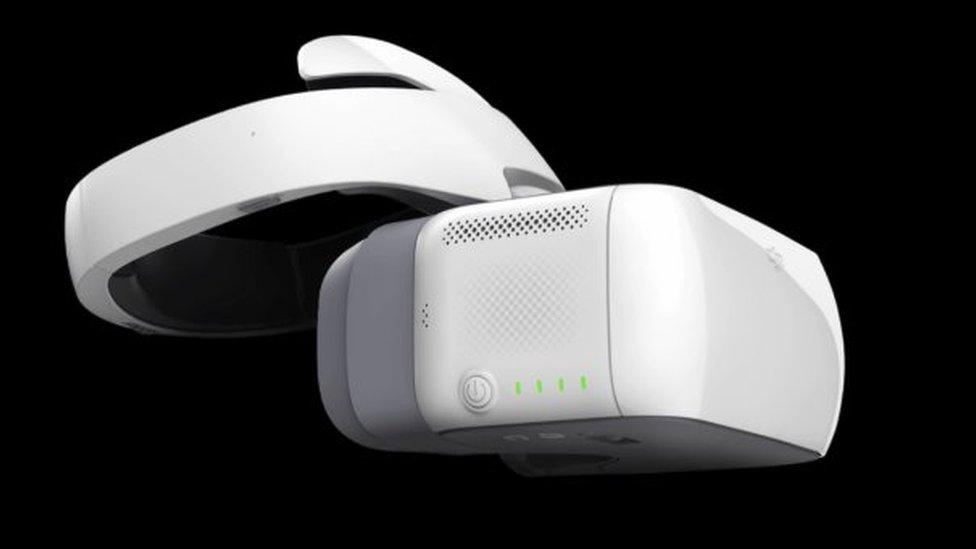
DJI's headset offers views from its drone in 1080p high definition resolution
When wearing the goggles, the user's head movements direct the drone's path.
This may appeal to drone race enthusiasts, but DJI notes it may contravene local regulations.
The UK's Civil Aviation Authority, for example, requires drones to be kept within sight at all times, external.
DJI is charging £999 for the Mavic Pro, which will become available in mid-October.
The Karma costs £719 as a standalone unit without a camera, but that rises to £1,000 when packaged alongside GoPro's Hero5 Black action cam.

Analysis: Dave Lee, North America technology reporter
Watch: Dave Lee gets hands on with GoPro's Karma quadcopter
Just last week, I was up a mountain, getting to grips with GoPro's first drone - a device the loss-making company needs to do well if it is to fend off increased competition in the action-cam sector.
But the Mavic Pro appears to beat GoPro's Karma in several key areas.
Most tempting for potential buyers might be the reduced risk of smashing their new, expensive kit into a brick wall.
One strong selling point for Karma, though, is the detachable gimbal, which lets people create lovely, smooth shots both on and off the drone.
GoPro is also confident that its quick-editing software and strong brand will make the Karma stand out.
But on paper, at least, DJI's product is stronger.
- Published19 September 2016

- Published19 September 2016
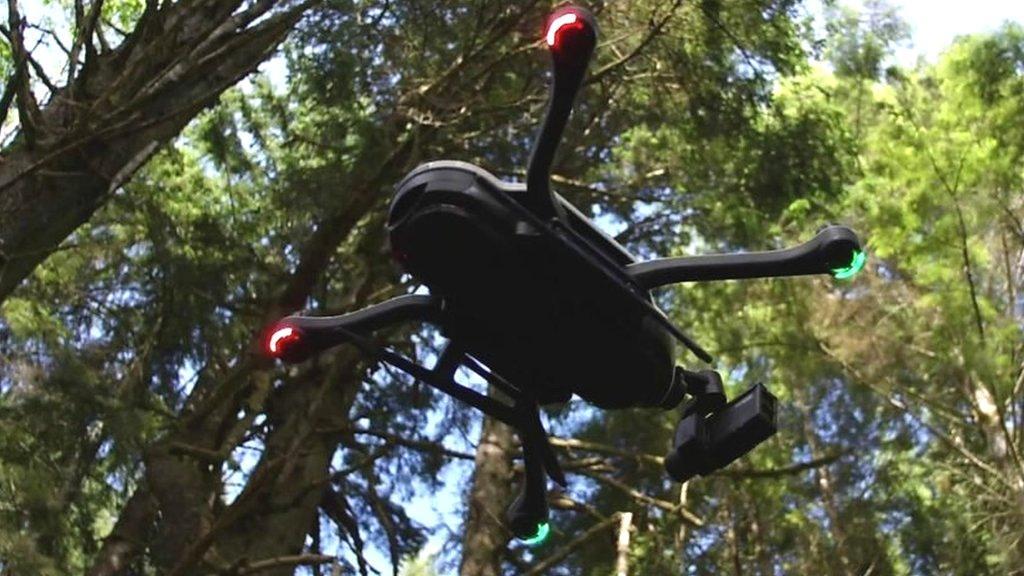
- Published9 October 2015
